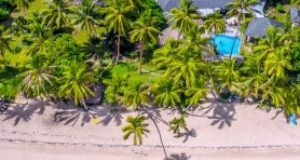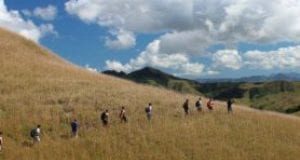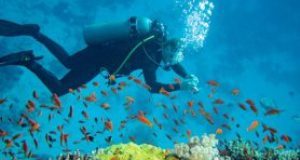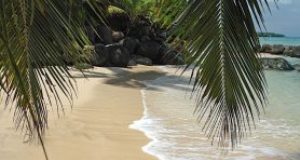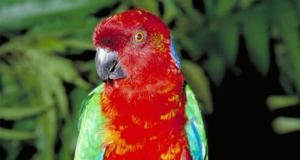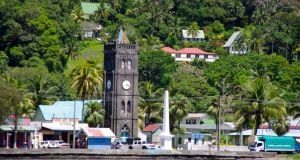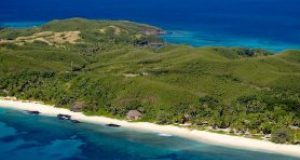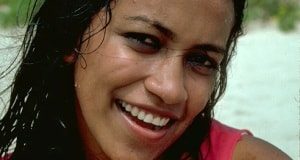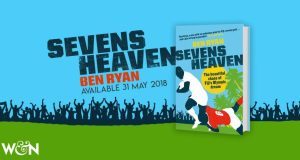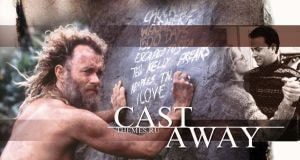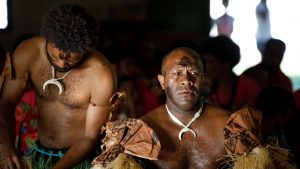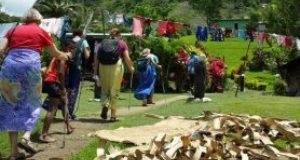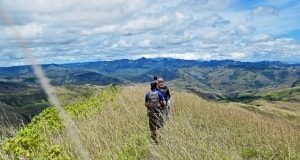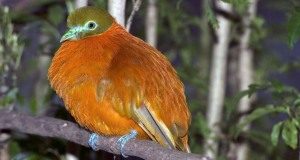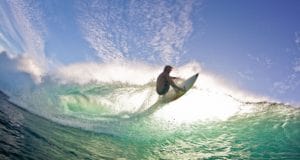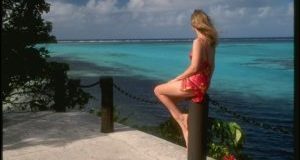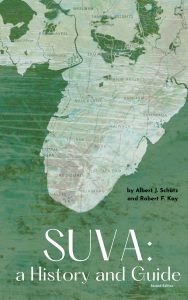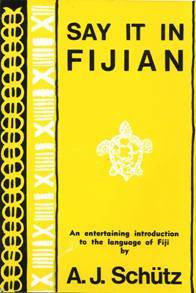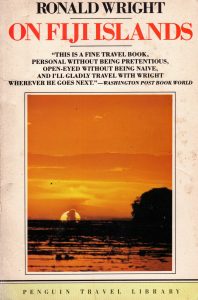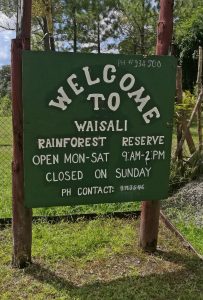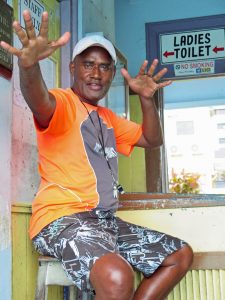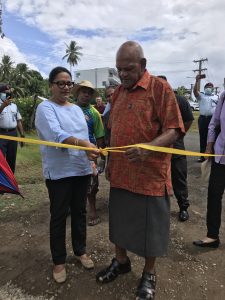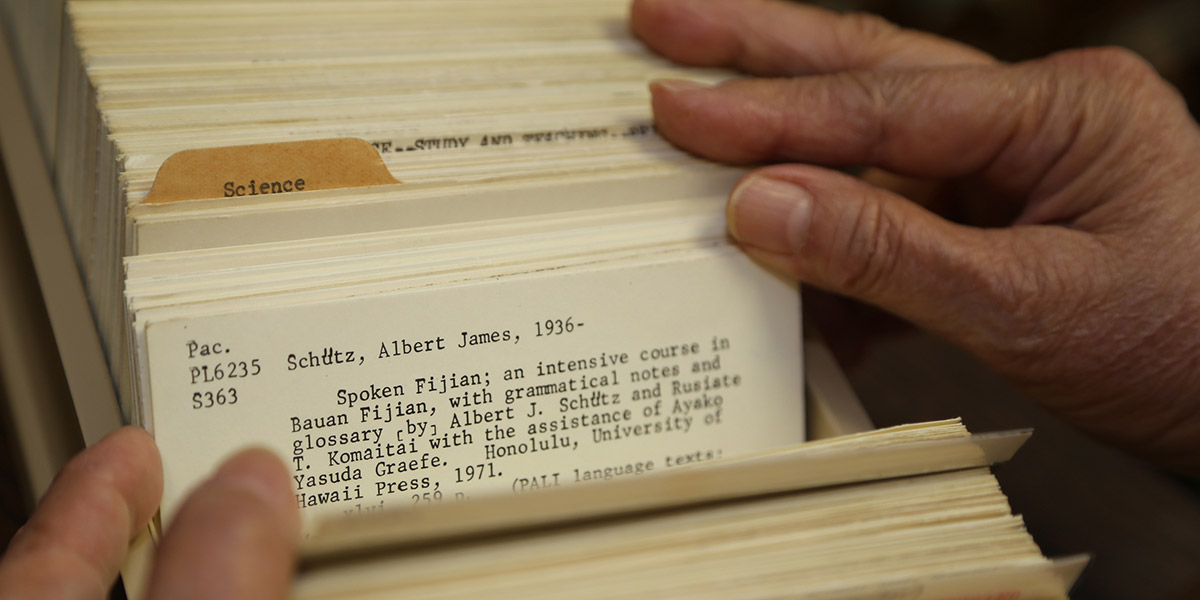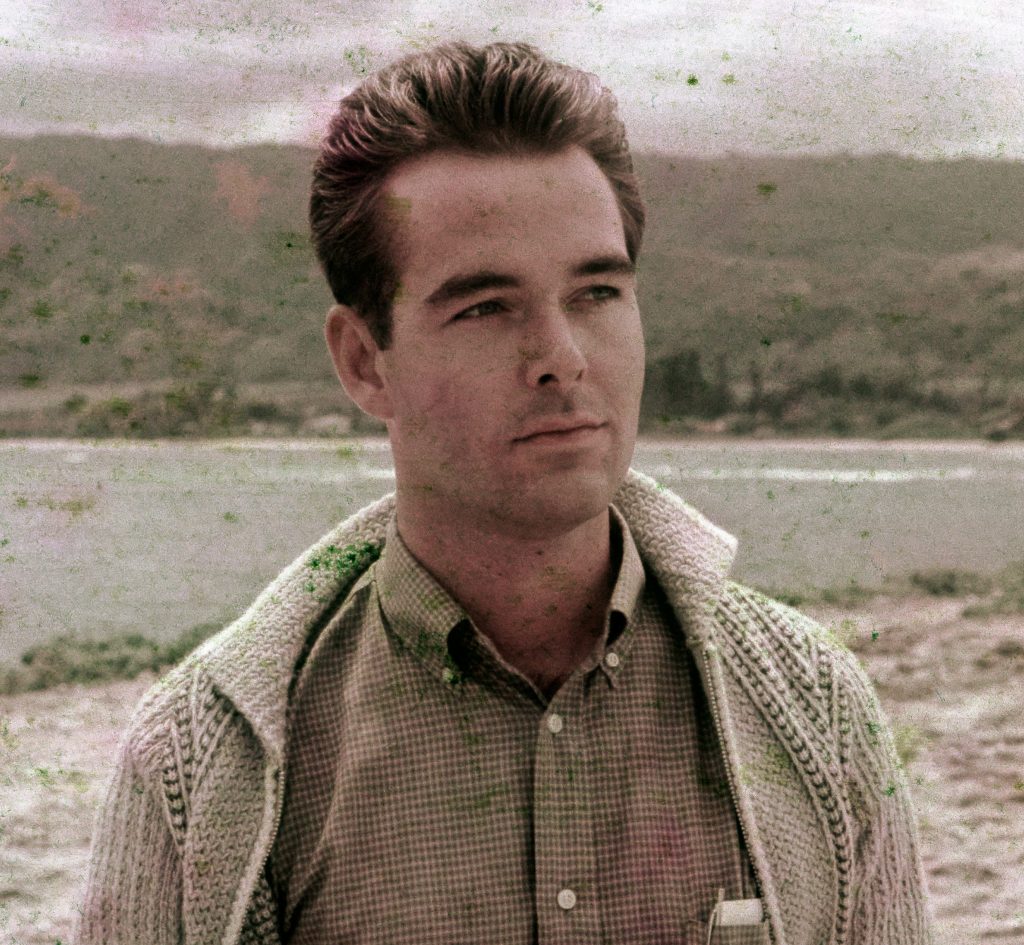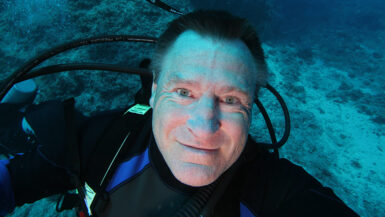by William O’Grady
Editor’s Note: This is the second in a two-part tribute to Al Schutz by University of Hawaii Professor, William O’Grady. One of William’s comments about Al that really struck me was his attention to the impact of nonindigenous scholarship on matters ranging from literacy to language planning. Thus Al was concerned about how the scholarship of the Fijian Language practiced by non-Fijians ultimately influenced the culture. “Indeed,” said Professor O’Grady, “the stated objective of his final book on Fijian was ‘to ensure that Fijians, especially teachers, have easy access to the history of the study of their language, especially its practical but sometimes controversial alphabet'”.
In his retirement, Al substantially revised his 1985 grammar, producing the Fijian Reference Grammar in 2014, which a reviewer glowingly described as “a substantial contribution not just to Fijian scholarship and documentation but to our understanding of language as a human faculty as well.” This was followed by Discovering Fijian: Early Impressions from Explorers, Traders, and Missionaries (2019), a remarkable record of early attempts by outsiders, beginning in the 1770s, to understand and manage the same bewildering linguistic diversity that Al himself confronted almost 200 years later in his dissertation research.
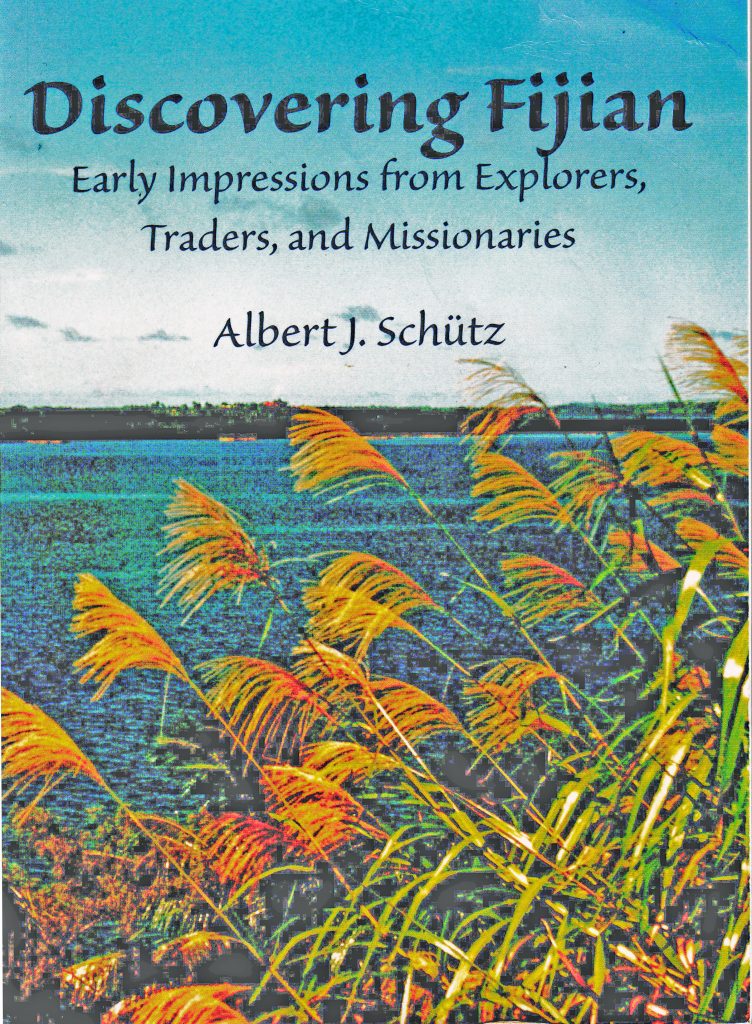
Despite his unwavering commitment to all things Fijian, Al’s research extended to other Pacific communities as well. Early in his career, influenced by the pioneering work of Samuel Elbert, Al developed a deep interest in Hawaiian studies, to which he made ground-breaking contributions over a period of decades. His widely admired book, The Voices of Eden: A History of Hawaiian Language Studies (1994), offers an invaluable account of efforts to analyze and write Hawaiian in the decades after the arrival of Europeans. (The main title is so striking that it is hard to believe that the subsequent appearance of Gospel choirs of the same name could be a coincidence.) Rich in historical detail and meticulously documented, it sheds light on issues that continue to be at the forefront of Hawaiian language studies, including lingering controversies over the reformed Hawaiian orthography.
A follow-up book, Hawaiian Language: Past, Present and Future (2020), appeared just three months before Al’s death. On a note of hope for the future, it included an appeal for a project that he had long advocated—a monolingual dictionary of Hawaiian, which he saw as a way to “allow users to avoid an English bridge to understanding, and move directly to a definition that includes Hawaiian cultural features and a Hawaiian worldview.” That goal harkens back to the Fijian dictionary project that Al championed in the 1970s, with the intent of creating the first monolingual dictionary for that language—a then controversial idea first proposed by Bruce Biggs and Andy Pawley.
Al found time to work on a number of other languages over the years, including Maori, Samoan, Tongan, and especially Nguna (also known as Nakanamanga and North Efate, an Oceanic language with fewer than 10,000 speakers in Vanuatu). Al prepared a grammatical sketch of the language in 1969 and a book of texts, and had been working with a team of coauthors on a dictionary at the time of his death.
A striking feature of Al’s research is its attention to the history of the Pacific islands on which he worked and to the impact of nonindigenous scholarship on matters ranging from literacy to language planning. These themes figured prominently in his work on both Fijian and Hawaiian, including in the two books that he completed in the final two years of his life (2019 and 2020, respectively, both mentioned above). Indeed, the stated objective of his final book on Fijian was “to ensure that Fijians, especially teachers, have easy access to the history of the study of their language, especially its practical but sometimes controversial alphabet” (p. xi).
As Al noted at his website, he felt an obligation, above and beyond his linguistic scholarship, to write for “a readership outside academia.” He did so brilliantly. The following account, from a tribute by ethnobotanist Puanani Anderson-Fung, is worth citing in its entirety as it captures Al’s gift for detail and documentation so well. Al “took the time” to paint a broader, more personal, picture of those who had contributed to the history of Polynesian languages. He not only captured the essence of earlier scholars’ contributions—by summarizing their complex works clearly and succinctly—but he also gave you a sense of the person—something most readers “don’t get to see” in other works.
Consider, for example, Al’s description of Horatio Hale, the 19th century “lexicographer and ethnographer” selected for the U.S. Exploring Expedition (1837-1842) at the age of 20—a man who learned and described Polynesia’s languages, and composed a chart of their consonant correspondences :: : Al described Hale as “the remarkable son of a remarkable woman (Sarah Buell Hale—editor, women’s rights advocate, and author : : : )” and a “linguistic prodigy” who had “published an Algonquin vocabulary at the age of seventeen ::: ” [The Voices of Eden, p. 263]. Al then moved seamlessly to an explanation of how this person, Hale, had made important contributions to our knowledge of Polynesian languages, and also why it mattered that it was Hale, and not someone else, who had encountered and chronicled the language and culture of Polynesia at that particular time in history.
A second extension of Al’s research reflected a deep commitment to the preservation of the languages on which he worked, which was reflected in his cre-ation of pedagogical materials and “popular” grammars designed for use by nonlinguists. Say it in Fijian (1972), Fijian Grammar for Teachers of Fijian (1979), the previously mentioned Nguna dictionary project, and the spectacularly successful Things Hawaiian: A Pocket Guide to the Hawaiian Language (1997, revised in 2009) are all outstanding examples of Al’s commitment to repaying the debt that linguists incur to the speakers of languages on which they work.

I can think of no words that would do full justice to Al’s character. His sense of humor, often manifested in his preternatural skills as a punster, was legendary, and his friendly disposition placed him high on everyone’s list of favorite people. Perhaps most impressive of all, though, was his extraordinary generosity, of which there are countless instances. As long-time editor of the University of Hawai‘i Working Papers in Linguistics, he mentored countless students as they strove to publish their first scholarly paper, a milestone event in their training. A gifted wordsmith, with a relentless attention to detail, Al would spend hours with each student, mentoring them on their writing and research—a practice that he continued throughout his retirement years.
His first advisee, Piet Lincoln (PhD, 1976), recalls:
Al taught me how to write. As his PhD student, I would write something by hand. My wife would type it. I would submit itto Al. In a day or two, he would return those pages with generous amounts of red ink correcting my prose. I had been a math major partly to minimize writing challenges. Al too had [studied] math, but he had also been an English major. Not only did he know how to write, he knew how to teach me to write.
I am still very grateful.
Peter Schuelke (PhD, 2020), the last student to be mentored by Al, tells a strikingly similar story:
In 2017 I went to the Solomon Islands for fieldwork and for COOL [the Conference on Oceanic Linguistics]. While I was there I was spending time with Piet Lincoln and Hans Schmidt :: : I mentioned that I felt I had a great analysis for symmetrical voice in Sasak, but that I was struggling with academic writing :: : Piet said that Al was excellent at teaching writing and suggested that I request lessons. After my return from field¬work, Al and I met once a week in his office to painstakingly rewrite [my paper]. We went sentence by sentence. Al proofread all ofmy work from there up until the defense draft of my dissertation.
Puanani Anderson-Fung wrote of Al’s generosity to her as mentor and teacher:
A wonderful part of the Albert J. Schutz legacy is, for me, his willingness to help anyone to acquire the skills and knowledge they need to use linguistics as a tool to enrich our understanding of some aspect of Hawaiian, Polynesian, or Fijian culture and history. “Pate” (his preferred nickname, taken from the Fijian form of his name, Alipate) tutored many non- traditional and traditional students during his retirement, and I was the beneficiary of his great kindness and erudition over these past ten years.

Al’s colleagues too benefitted from his assistance and advice. I was a frequent visitor to his office, especially for questions relating to language and literacy in the Pacific. We also spent a lot of time discussing the travails of writing and publishing, an ongoing priority for Al that ultimately inspired him to begin publishing some of his own books via Amazon’s independent platform. We also shared a love of the Hardy Boys stories, especially the first editions. Al had a large collection of children’s literature and an impressive expertise in the genre. One of the striking features of his home in Manoa was a reading nook and an upper-floor library, the envy of the many academics who visited for meetings of the Austronesian Circle.
From farm boy to world-renowned linguist, Al charted a unique path for himself based on hard work and steadfastness of purpose. He made major contributions, often foundational, in the areas in which he worked. Even in his retirement years, which began in 1998, Al was in his office several days a week, working, writing, meeting with colleagues, mentoring students— and never looking a day older than when we had first met him. As the last surviving member of the founding faculty of the Department of Linguistics, his presence was both comforting and inspirational. His death left us with the mixture of grief and gratitude that is reserved for only the best of people.
Al taught me how to write. As his PhD student, I would write something by hand. My wife would type it. I would submit it to Al. In a day or two, he would return those pages with generous amounts of red ink correcting my prose. I had been a math major partly to minimize writing challenges. Al too had [studied] math, but he had also been an English major. Not only did he know how to write, he knew how to teach me to write. I am still very grateful.
******************************
You can read about The Hawaiian and Pacific Collections Endowment in Honor of Its Faculty and Staff (endowed by Al Schutz in this article) : Professor Honors Special Collection Of Friends
The original version of this obituary “In Memoriam, Albert J. Schütz (1936–2020)” was published in Oceanic Linguistics, vol. 60 no. 1, 2021, p. 250-255. University of Hawai‘i Press.)
Mahalo to the University of Hawai’i Press for allowing me to re-publish this Tribute to Al Schutz in Fiji Guide.
Top photo courtesy UH Foundation
© by University of Hawai‘i Press. All rights reserved.




